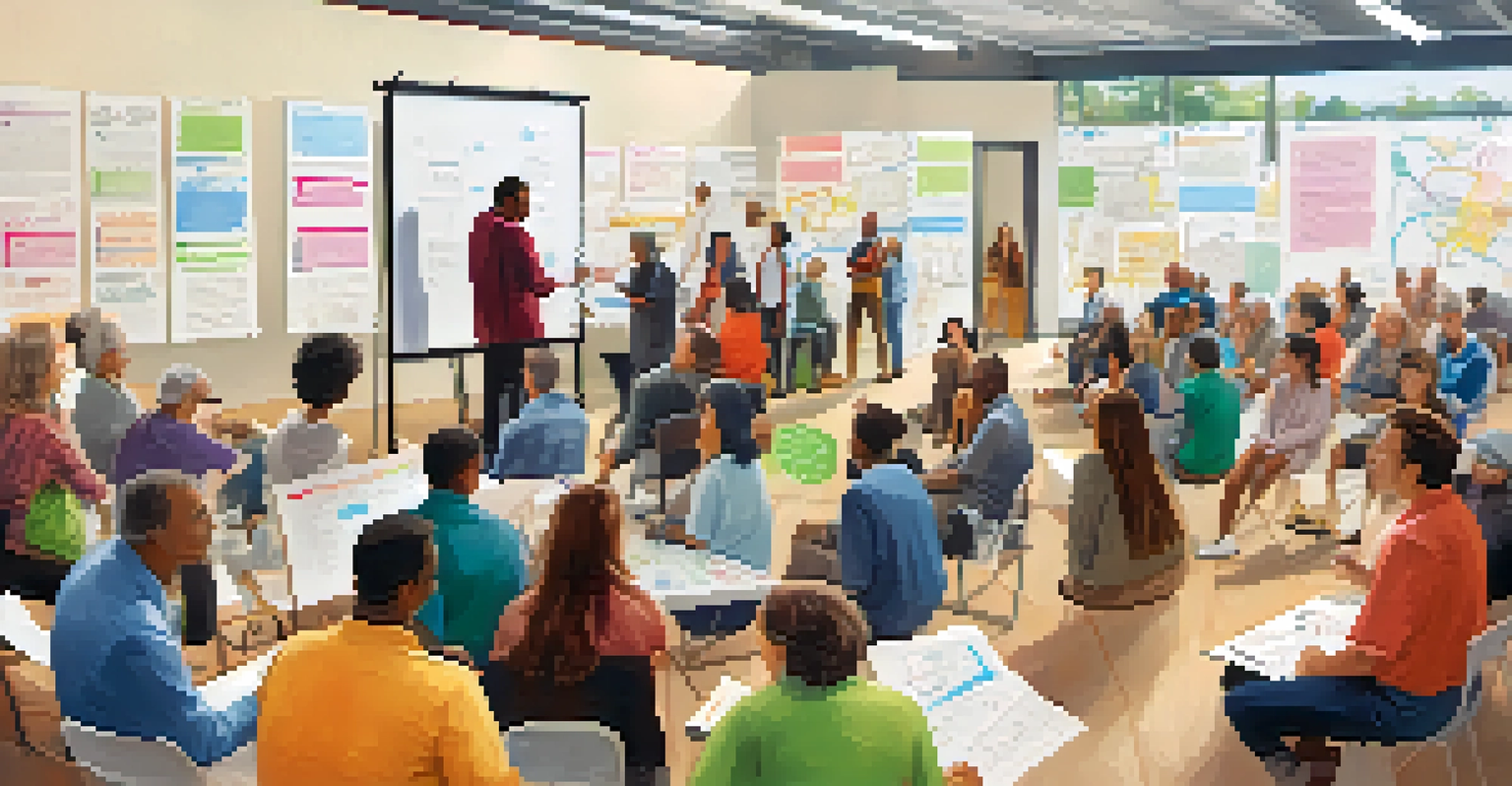Bicycle and Pedestrian Infrastructure in Illinois: A Review

The Importance of Bicycle and Pedestrian Infrastructure
Bicycle and pedestrian infrastructure plays a crucial role in promoting sustainable transportation. It encourages people to choose walking or cycling over driving, which can reduce traffic congestion and lower carbon emissions. Moreover, well-designed pathways and bike lanes can enhance public health by promoting physical activity in everyday life.
The bicycle is a curious vehicle. Its passenger is its engine.
In Illinois, the demand for improved infrastructure is growing as more residents seek eco-friendly commuting options. This shift not only benefits individual health but also fosters a sense of community. By making neighborhoods more walkable and bike-friendly, cities can create vibrant spaces where people want to spend time.
Investing in these infrastructures also has economic benefits. Local businesses can thrive when more customers can easily access them on foot or by bike, leading to increased foot traffic and sales. Thus, the case for improving bicycle and pedestrian infrastructure is not just about transportation; it’s about creating healthier, more active communities.
Current State of Infrastructure in Illinois
Illinois has made significant strides in developing bicycle and pedestrian infrastructure, yet challenges remain. Major cities like Chicago and Springfield have implemented various initiatives to improve walkability and cycling safety. However, rural areas often lag behind, lacking the necessary facilities to support non-motorized transport.

For instance, while Chicago boasts an extensive network of bike lanes and paths, many suburban towns and rural communities are still grappling with inadequate infrastructure. This disparity highlights the need for a more cohesive approach that addresses the needs of all residents, regardless of where they live.
Bicycle Infrastructure Boosts Health
Improving bicycle and pedestrian facilities promotes physical activity, reduces traffic congestion, and enhances community well-being.
Moreover, funding remains a crucial issue. Many projects rely on federal and state grants, which can be competitive and limited. This underlines the importance of local advocacy and planning to ensure that all parts of Illinois can benefit from improved pedestrian and cycling facilities.
Key Challenges Facing Bicycle and Pedestrian Infrastructure
Despite the progress made, several challenges hinder the development of effective bicycle and pedestrian infrastructure in Illinois. Safety concerns are often at the forefront, as many cyclists and pedestrians feel vulnerable on busy roads without proper lanes or crossings. This fear can deter individuals from using these modes of transport.
Walking is a man's best medicine.
Additionally, funding is a persistent hurdle. Many initiatives depend on grants and local budgets, which can fluctuate or be insufficient for large-scale projects. Without consistent financial support, even the best-laid plans can stall before implementation.
Community engagement is also critical. Often, the voices of local residents are not adequately considered in planning discussions. By fostering a collaborative approach that includes public input, planners can create infrastructure that truly meets the needs of the community and promotes active transportation.
Successful Initiatives in Illinois
Some successful initiatives in Illinois serve as inspiring examples of effective infrastructure development. The Chicago Streets for Cycling Plan aims to create a comprehensive network of bike lanes, significantly increasing safety and accessibility for cyclists. This initiative has not only improved commuting options but has also encouraged a cultural shift toward cycling as a viable transportation choice.
Another noteworthy project is the enhancement of the Illinois Prairie Path, a multi-use trail that connects several communities. This path has become a popular route for cyclists and pedestrians alike, promoting outdoor activity and linking residents to nature and each other.
Funding Challenges Persist
Many infrastructure projects rely on competitive grants and local budgets, creating obstacles for comprehensive development across Illinois.
These examples demonstrate that with the right planning and community support, it's possible to create infrastructure that fosters a more active, connected, and sustainable lifestyle. They also highlight the importance of continual investment and innovation in infrastructure planning.
Community Engagement and Advocacy
Community engagement is essential for the success of bicycle and pedestrian infrastructure projects in Illinois. Local advocacy groups often play a vital role in raising awareness and pushing for improvements. By mobilizing residents, these organizations can effectively communicate their needs and priorities to policymakers.
For instance, groups like the Active Transportation Alliance work tirelessly to promote cycling and walking initiatives across the state. Their efforts help to build a collective voice that advocates for better infrastructure and safer streets, emphasizing the importance of community involvement in transportation planning.
Moreover, public meetings and workshops provide platforms where residents can express their concerns and ideas. This collaborative approach not only fosters trust between communities and planners but also leads to solutions that reflect the unique characteristics and needs of each neighborhood.
Future Directions for Infrastructure Development
Looking ahead, Illinois has the opportunity to further enhance its bicycle and pedestrian infrastructure. Emphasizing connectivity between existing trails and bike lanes can create a more cohesive network that encourages active transportation. This focus on integration will be essential for making non-motorized transport a viable option for more residents.
Moreover, incorporating advanced technologies could play a pivotal role in future developments. Smart traffic signals, detailed mapping apps, and real-time updates about bike lane availability can improve the overall experience for cyclists and pedestrians. Such innovations can make traveling on foot or by bike more convenient and appealing.
Community Input Drives Success
Engaging local residents in planning discussions ensures infrastructure meets community needs and fosters a sense of ownership.
Lastly, continued collaboration among government agencies, community organizations, and residents will be vital. By working together, stakeholders can ensure that the infrastructure evolves to meet changing needs while promoting sustainable, healthy transportation options for all.
The Role of Policy in Infrastructure Development
Policy decisions significantly impact the development of bicycle and pedestrian infrastructure in Illinois. Local and state governments play a crucial role in allocating resources and prioritizing projects that enhance walkability and cycling safety. These policies can either facilitate or hinder progress, depending on their direction.
For instance, initiatives such as Complete Streets policies encourage the design of roadways that accommodate all users, including cyclists and pedestrians. These policies reflect a commitment to prioritizing active transportation and can lead to more inclusive infrastructure planning.

However, policy implementation can be inconsistent. Advocacy for stronger regulations and funding mechanisms is essential to ensure that bicycle and pedestrian infrastructure remains a priority. By holding policymakers accountable, communities can work towards a future where sustainable transportation options are accessible to everyone.